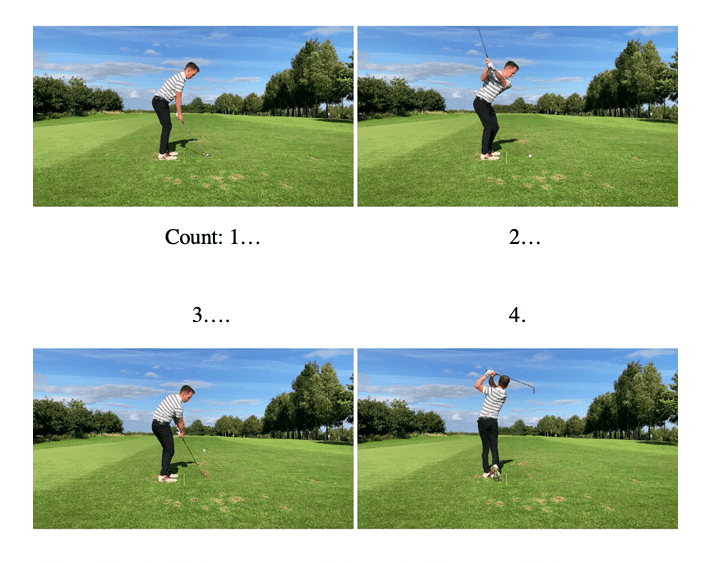This content provides ten tips for improving your golf swing. The first tip advises creating a pre-shot routine to stay focused and calm during shots. The second tip suggests using your body instead of your arms to produce consistent swings. The third tip stresses the importance of a correct grip to reduce issues. The fourth tip highlights the significance of keeping your head still during a swing to maintain balance. The fifth tip recommends keeping your eye on the ball to increase accuracy. The sixth tip supports good posture to maximize power and accuracy. The seventh tip advises practicing swing tempo to improve accuracy. The eighth tip recommends using body weight to add power to a swing. The ninth tip tells golfers to analyze ball flight to fix swing issues. The final tip encourages regular practice to enhance golfing abilities.
1. Get a Pre-Shot Routine
A pre-shot routine is like a ritual that you perform before every shot. A routine helps to keep you focused, calm, and relieves anxiety. Your pre-shot routine doesn’t have to be complicated, try to keep it simple and repeatable. It will become a habit that you’ll do automatically, which will help you get into the zone.
2. Use Your Body, Not Your Arms
Many golfers make the mistake of using their arms too much in their swing, which causes inconsistent shots. To get a consistent swing, use your body, not your arms. Your body should do the work and the swing should start from your hips, not your arms. Engage your core and legs for balance and stability, and you’ll find your shots go straighter and farther.
3. Focus on Your Grip
The grip is the foundation of your swing, and if it’s not correct, it can cause you many problems. Make sure your grip is firm but not too tight, and that your hands are in the right position on the club. The V between your thumb and index finger should point towards your chin.
4. Keep Your Head Still
Many golfers lift their heads during their swing, which throws off their balance and causes poor shots. Keep your head still throughout your swing, and you’ll find your shots are more consistent and accurate.
5. Keep Your Eye on the Ball
One of the most important aspects of your swing is making good contact with the ball. To do this, you need to keep your eye on the ball at all times. This will help you see where the ball is, and you’ll be able to hit it more accurately.
6. Get Proper Posture
Good posture is essential in golf, and it can help you produce more power and accuracy. Make sure you stand with your feet shoulder-width apart, your knees slightly bent, and your back straight. Your weight should be on the balls of your feet, not your heels.
7. Practice Your Tempo
Your swing’s tempo is the pace or rhythm of your swing. Practicing your tempo can help you swing more smoothly, and you’ll be able to hit the ball more accurately. To practice your tempo, count the beat of your swing in your head, and make sure it’s consistent.
8. Use Your Body Weight
Using your body weight can help you produce more power in your swing, which can help you hit the ball farther. Shift your weight to your back foot during your backswing, then shift your weight to your front foot during your downswing. This will give you more power and accuracy.
9. Watch Your Ball Flight
Watching your ball flight can give you valuable information about your swing. If your ball is slicing to the right or hooking to the left, then there is a problem with your swing. Analyze your ball flight to see where you’re going wrong and make the necessary adjustments to your swing.
10. Practice, Practice, Practice
Practicing is the key to improving your golf swing. The more you practice, the better you’ll get. Spend time at the driving range or on the course to hone your skills. Try to practice for at least an hour a day, and you’ll see a significant improvement in your swing in no time.








